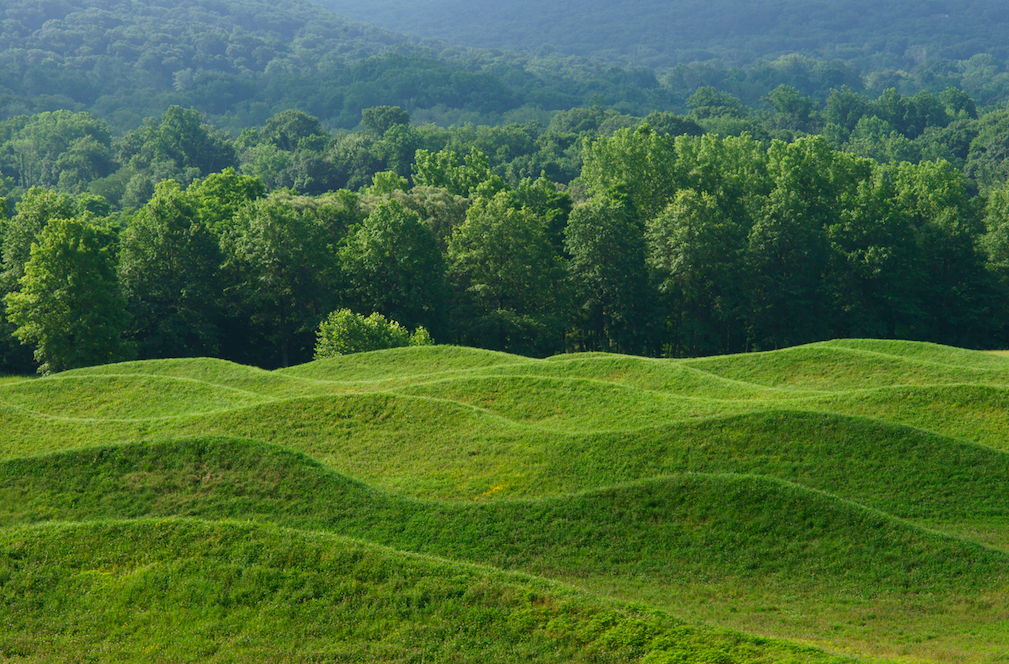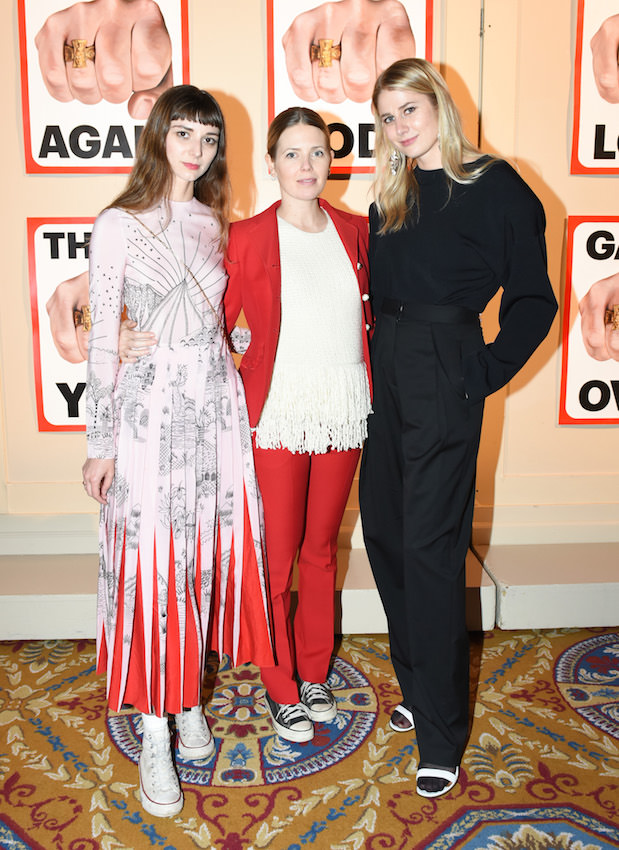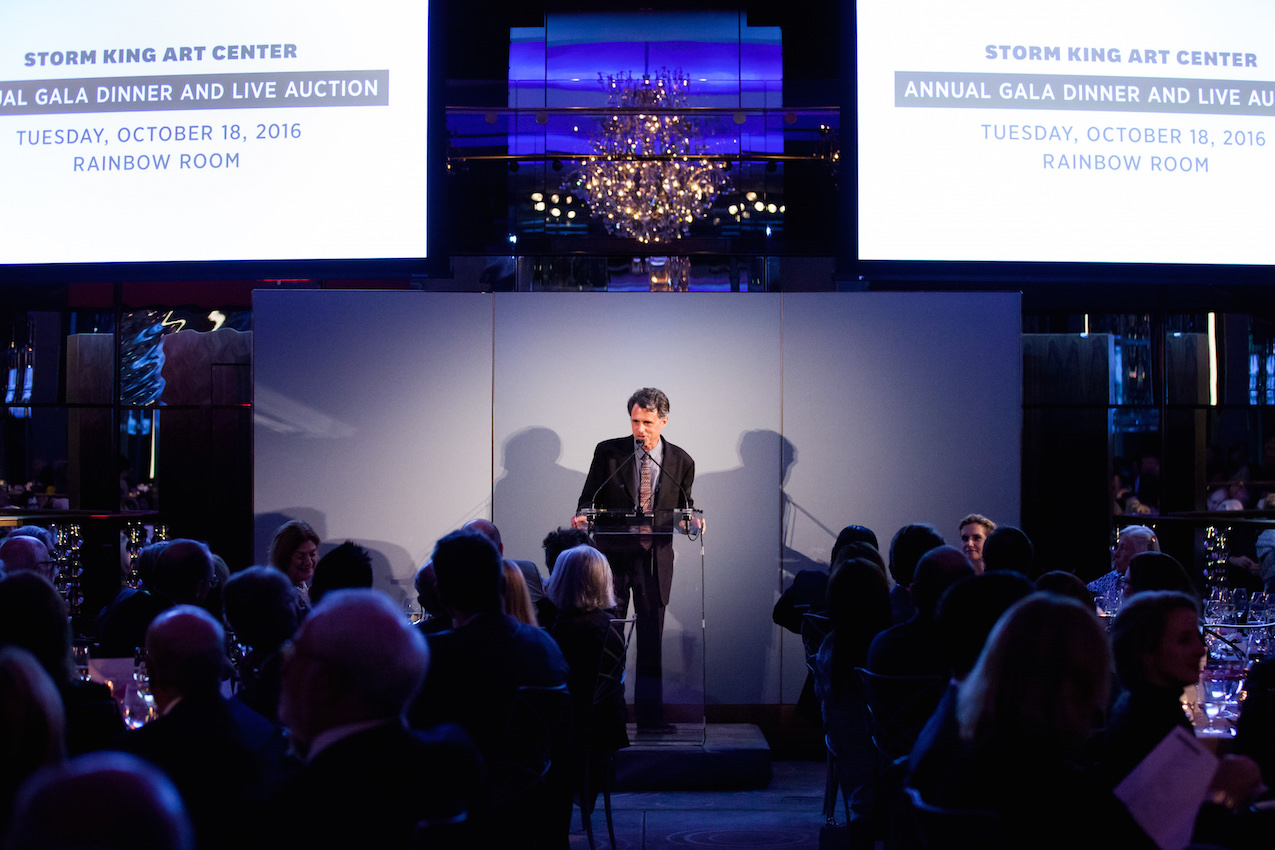Maya Lin has always been greater than the sum of her parts. Architect, artist, and design mogul are just a few of her more noteworthy titles. But when dissecting the creative processes of her ambitious body of work, countless others come to light. A wide breadth of expertise in science, geography, and nature all afford Maya a set of skills that distinguishes her work as inspired, but more importantly informed. An ongoing exploration of her Chinese-American roots, as well as the intersection of Eastern and Western cultures is prominent in her installations. Duality, she notes, is an integral part of her internal dialogue.
Such is the case with her simultaneous exhibitions at Pace’s London and New York gallery spaces in series of new works called “Here and There,” on view through June 22, 2013. The works translate the enormity of natural bodies to smaller-scale installations to be reinterpreted and better understood. “Here” recreates the waterways of both new and old New York in a series of fluid steel wall works. “There” boasts small-scale recreations of natural phenomena in and around London, and spanning beyond to Europe, Asia, Africa, and the Arctic.
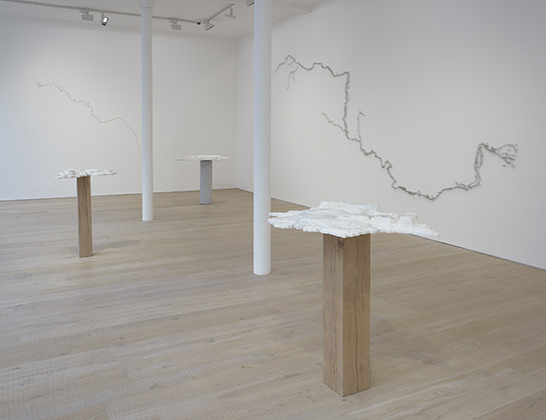
What makes this particular installation so enthralling is not just its exploration of art and nature by employing technological research, but that this exhibition is in fact the first show that Maya’s ever composed for a gallery. She jokes that perhaps it’s taken her this long because she’s wanted to take her time – and for that, it’s paid off tremendously. Maya spoke with Whitewall about her dual exhibitions, her creative process, and dualistic identity as an artist.
WHITEWALL: You currently have simultaneous exhibitions happening in New York and London.
MAYA LIN: It’s a dual show. It’s tearing – [the one is New York] is the “Here” and only focuses on New York and its environments. London, kind of the “There,” not only focuses on London but on more of an environmentally global outlook on things. The two shows are both in the catalogue, which will be out in both galleries, but it’s sort of a paired show.

Digital projection
WW: How did those two shows come together?
ML: I opened the London show about three weeks ago. I started with working on the New York show and then the London Pace wanted to see if I could simultaneously do a show. I had given a talk at Tate in the fall and I was working on a body of work that ended up working out really nicely so that I could have a connection between the two.
WW: It’s clear that you really enjoy working with environmental elements and the natural world. Tell me a little about how that translates to this new body of work.
ML: I’ve always loved the scientific analysis portion. You spend months and months looking at data and really analyzing and drawing all over the data you’re given. And then I strip it down to almost its bare essence. The show in the end is sparse. I really wanted it that way – it’s almost empty. And then there are these pieces of what I would call distillations of natural phenomena.
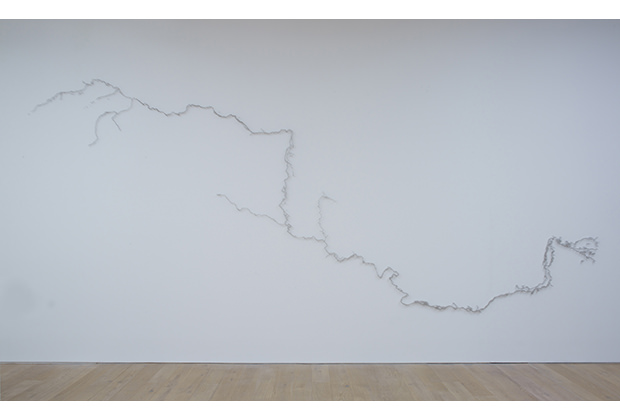
Overall installation dimensions variable
WW: The fluidity of natural elements is reflected throughout your body of work. What is it about these particular elements that you’re enthralled with?
ML: I think right now it’s two-fold. I think I’ve always been focused on water [such as with] the Storm King Wavefield – which took on this freeze-stop photograph of water waves and then translated it into an 11-acre earthwork. But as well I’ve been very specific [in my installations]. They’re almost mappings where I’ve looked around the world and analyzed and studied. An interesting thing is it’s not just issues that are relevant today. One of the rivers that I made out of pins in the show in New York is of three streams that were crossing Midtown Manhattan maybe 100-200 years ago. So the fact that say Spring Street is named for springs, or that Pearl Street in Downtown Manhattan was named for all the muscle and oyster shells that used to be there. So there’re aspects that reveal what used to be there.
WW: And what do you hope is the takeaway there?
ML: Maybe in my art I can get you to rethink what we’re looking at despite reframing what we’re looking at.
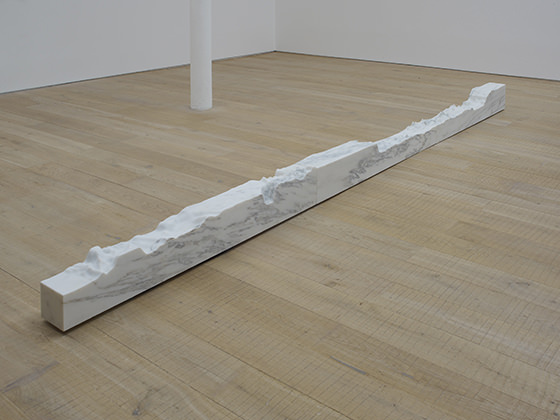
Steel pins
WW: Large-scale installations are a huge part of your work. When you’re showing these bigger pieces, I’m curious about how you feel they’re received by your audience collectively in a gallery space rather than individually and maybe in a more natural setting.
ML: I think that that’s a good question. In my last show, “Systematic Landscapes,” I tried to get to the scale of what I was doing and bring it inside. There was a group of pieces, and though they dialogued with one another, it set me up to almost [further] that exploration of what I would call these mapping works. In a funny way it’s almost chicken and egg – what comes first has been always the smaller scale pieces and that leads me to go outdoors.
WW: Can you tell me about how that comes together for an installation like “A Fold in the Field”?
ML: In New Zealand I just put in my largest piece ever; it’s 11-acres, it’s called A Fold in the Field, and the fold goes 60-feet high. Those you really have to go see, and I like them almost for their singularity. But at the same time, I’ve been working on a series of smaller-scaled works. I call them the heart and soul of the pieces because when you’re working at the scale of 11-acres, someone is building those pieces for you in bulldozer form. So what I do is I make everything by sketches and drawings, and I also make these smaller-scaled works with one or two assistants working very closely with me.
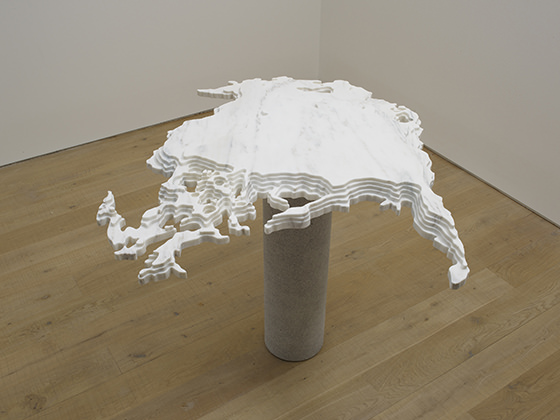
101 x 252 x 1-1/2 inches
In a funny way those pieces are how I figure out what I might say at the larger scale because I get to make them right and I get to make them at my studio, which is really important to me. I’d say what I’m doing outside and what I’m doing inside at the studio-scale level have been in dialogue for the last 20 years, but you might not know as much about the small-scaled works.
WW: You always reference the ongoing exploration of your identity as an Asian-American as having a profound effect on you as an artist. I’m wondering how that translates in your newer works.
ML: I think in all my work some could say I end up reducing everything to a calmness and a stillness. The book I first put out was called boundaries. I love the place between states, and I think part of it has got to be this East/West cultural divide. My parents come from China; maybe they don’t feel that comfortable being in America. I’m born and raised in Ohio, and so part of me would say I’m just a Midwestern kid – you’re not. You’ve got all of these cultural underpinnings that your parents brought that you might not be aware of but they’re very much a part of your work.
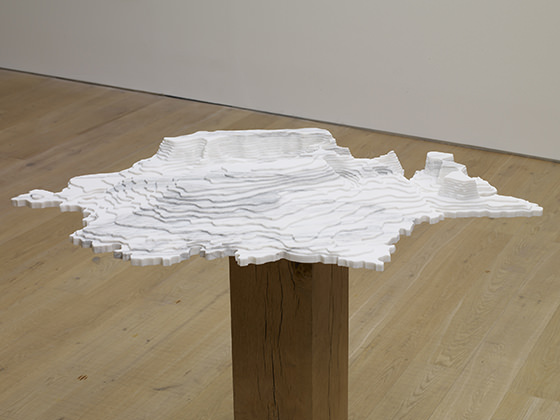
Vermont danby marble
So I think they’re the place where opposites meet. It’s East/West. It’s that cultural thing that probably drew me to between states – art and architecture, science and art – where a lot of what I do is a parallel between left-side-of-the-brain thinking, and right-side-of-the-brain thinking. And for some strange reason, I have always had the analytic and the purely intuitive side. So no matter how much I end up researching something, in the end I’m going to put it all away and I’m going to make something. Maybe it’s because I never left graduate school. [Laughs]




